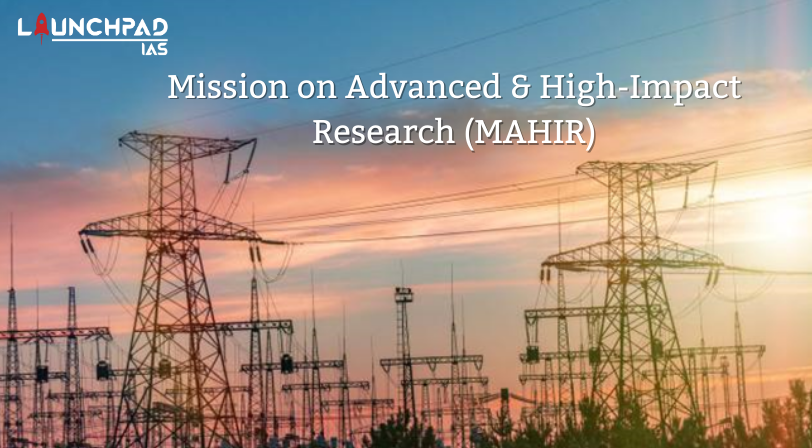Objectives of the Mission
- Mission on Advanced & High-Impact Research (MAHIR) will be under the Power Ministry and Ministry of New and Renewable Energy.
- To identify emerging technologies and areas of future relevance for the global power sector and develop them indigenously.
- To provide a platform for collective brainstorming and synergetic technology development among power sector stakeholders.
- To support pilot projects of indigenous technologies developed by Indian start-ups and facilitate their commercialization.
- To leverage foreign alliances and partnerships for research and development of advanced technologies and technology transfer.
- To promote scientific and industrial R&D in the power sector and create an innovative ecosystem.
- To position India among the leading countries in power system-related technologies and applications development.
Funding
- It will be funded by pooling resources from the Ministry of Power, Ministry of New & Renewable Energy, and Central Public Sector Enterprises under these ministries.
- Additional funding, if required, will be mobilized from the Government of India’s budgetary resources.
Areas Identified for Research under MAHIR
- Alternatives to Lithium-Ion storage batteries
- Modifying electric cookers/pans to suit Indian cooking methods
- Green hydrogen for mobility (High-Efficiency Fuel Cell)
- Carbon capture
- Geothermal energy
- Solid state refrigeration
- Nanotechnology for EV battery
- Indigenous CRGO technology
Structure of the Mission
Two- Tier Structure
It has a two-tier structure consisting of a Technical Scoping Committee and an Apex Committee.
- The Apex Committee:
- It deliberates on technology and product development, approves research proposals, and looks into international collaborations.
- The Apex committee will also look into international collaborations. The final approval of all the research proposals/projects shall be given by the Apex Committee.
- It is chaired by the Union Minister for Power & New and Renewable Energy.
- Technical Scoping Committee:
- It identifies research areas, recommends potential technologies, and monitors approved research projects.
- It is chaired by the Chairperson of the Central Electricity Authority.
Central Power Research Institute (CPRI), Bengaluru will provide all necessary secretarial assistance to the Apex Committee and Technical Scoping Committee.
Scope of the Mission
- Once research areas are identified and approved, outcome-linked funding proposals will be invited globally.
- Quality cum Cost-Based Selection (QCBS) basis will be used for selecting the proposals.
- Pilot projects of technologies developed by Indian start-ups will be funded, and their commercialization will be facilitated.
- International collaboration and technology transfer will be encouraged.
Significance of the MAHIR
- Indigenous Development:
- By developing advanced technologies within the country, India can reduce its dependence on imports, enhance self-reliance, and promote domestic innovation and manufacturing capabilities.
- It aligns with the “Make in India” initiative and contributes to the growth of indigenous technology-driven industries.
- Energy Transition and Net Zero Emissions:
- MAHIR can support the adoption of cleaner and greener energy sources, energy storage solutions, and carbon capture techniques.
- This contributes to India’s commitment to combating climate change and transitioning towards a sustainable energy future.
- Economic Growth and Manufacturing Hub:
- MAHIR aims to make India a manufacturing hub for advanced power technologies.
By developing and deploying cutting-edge technologies, it can attract investments, foster innovation-driven industries, and create job opportunities.
- MAHIR aims to make India a manufacturing hub for advanced power technologies.


